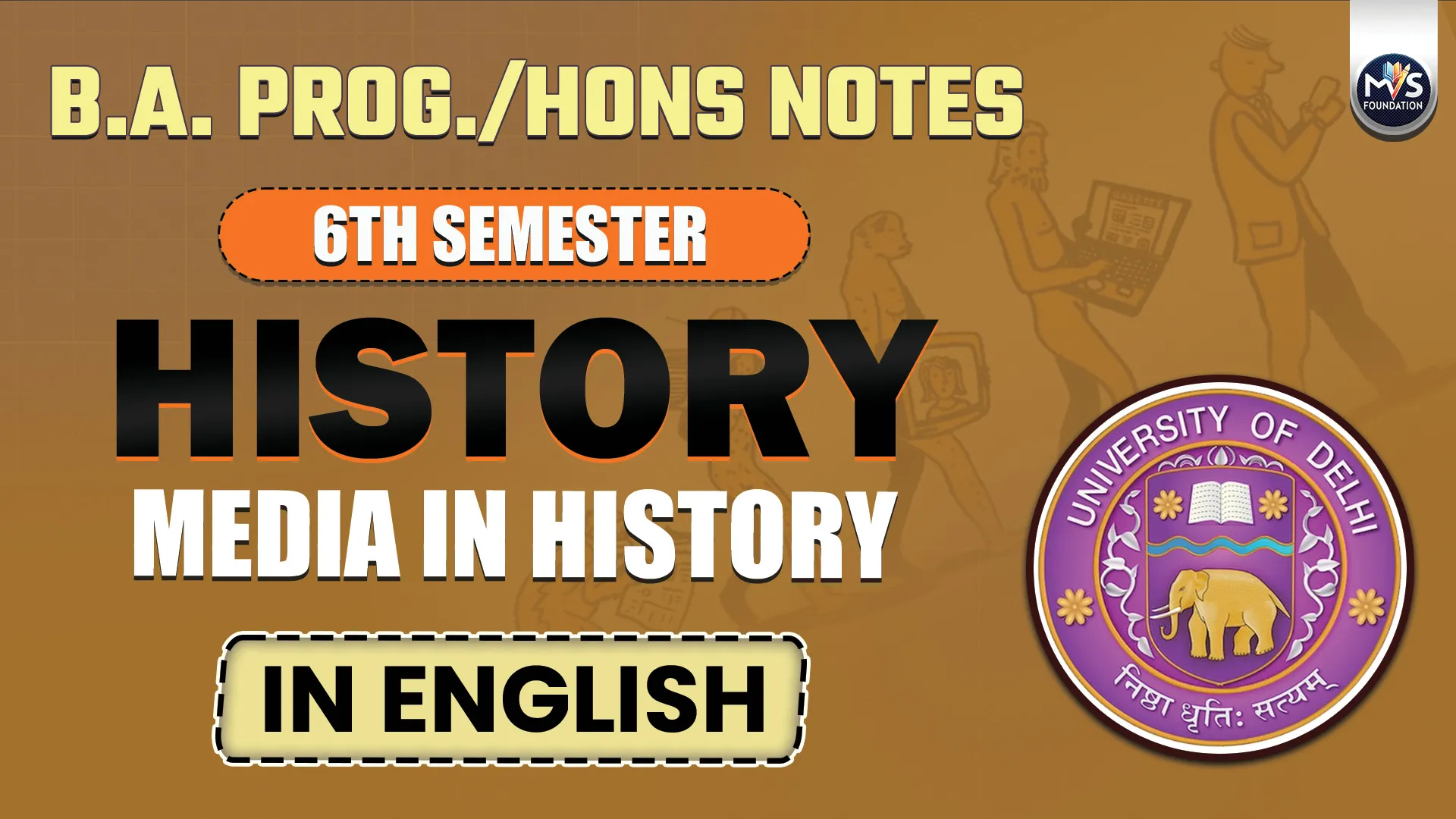
Get in Touch
We will get back to you within 24 hours.
Welcome to MVS Blog

Q1- Critically examine the role of media in the building of nation and nationalism in colonial India.
Answer -
Introduction
Before the colonial period, the means of communication in India were limited. However, as British rule increased exploitation, control, and injustice, it became essential to awaken public awareness. In this context, Print media and Broadcast media became effective tools for spreading nationalist ideas and uniting the people. However, due to differences in language, class, and political opinion, its reach remained limited, and its impact on society was not evenly distributed.
Major Media Forms in Colonial India: In colonial India, there were two major forms of media print media and broadcast media. Print media included newspapers, magazines, novels, and poems. Broadcast media included radio and cinema, both of which played a significant role in the making of nation and nationalism during that time.
Role of Media in Nation and Nationalism in Colonial India :
1. Newspapers - In colonial India, newspapers became the most important medium to
tell the truth and spread awareness. Papers like Kesari and Amrit Bazar Patrika exposed British atrocities and injustice. The ideas of leaders like Tilak and Gandhi also reached people through them. They inspired patriotism and gave direction to the freedom struggle. Their reach from villages to cities made them a part of the mass movement.
2. Magazines - It reached those who were educated and liked to think critically. They
published articles on issues like freedom, social reform, education, and women's rights. "Indian Review' and 'Bharat Mitra' became platforms for thinking and progressing for the nation. They connected youth, leaders, and the educated class, and strengthened the freedom movement.
3. Novels - Novels used stories to draw people's attention towards freedom and social issues. Anandamath by Bankim Chandra Chattopadhyay and Premchand's novels deeply touched the hearts of people. They showed poverty, injustice, and the reality of British rule. Their characters were like common people, making readers feel connected. These works inspired people to think, question, and adopt national unity.
4. Poems - Poems became a powerful medium of patriotism. Filled with pain, struggle, and hope, patriotic poems like "Vande Mataram" filled millions of Indians with passion. Poets like Ramdhari Singh 'Dinkar', Maithili Sharan Gupt, and Subhadra Kumari Chauhan gave emotional strength to the freedom movement. Poems expressed big ideas in simple words, making them easy for everyone to understand and feel.
5. Radio- Radio was a new medium at that time, mostly under British control, yet it became a strong nationalist tool. Especially Subhas Chandra Bose's "Azad Hind Radio" inspired Indians to rise against foreign oppression. Gradually, leaders' messages and national news began reaching the people through radio, which helped accelerate the movement.
6. Cinema- Cinema was initially just a source of entertainment, but gradually it started carrying patriotic messages. Films like "Chhatrapati Shivaji" and "Bharat Mata" evoked pride and strength among people. Though the British imposed censorship, filmmakers hid messages for the nation in stories and songs. This strengthened the spirit of freedom among people. Cinema especially influenced the youth.
Critical Limitations of Media in Colonial India :
1. Limited Reach - At that time, very few people were literate, especially in villages. Newspapers and magazines mostly reached cities and the educated class. The rural population, which was a large part of the country, remained untouched. As a result, the spirit of nationalism could not spread everywhere.
2. Linguistic and Regional Limits- Newspapers were printed in different languages, which made national unity difficult to establish. For example, Bengali newspapers were effective in Bengal but had limited reach in Hindi or South India. This slowed down the pace of the national movement.
3. British Censorship - The British government kept strict control over the press. After the 1857 revolt, laws like the Vernacular Press Act (1878) imposed restrictions on newspapers. Many editors were jailed, and some papers were shut down. This was an attempt to suppress independent voices.
4. Sensational Journalism - Some newspapers created a wrong impact by publishing spicy news or
provoking communal sentiments. This increased tension and division in society. For example, some articles fueled Hindu-Muslim conflict, which harmed national unity.
5. Ignoring Caste and Class- Media mainly influenced upper castes and educated classes. Issues of
Dalits and weaker sections were rarely highlighted. Though some newspapers discussed social reform, deep-rooted problems like casteism were not addressed openly. Hence, the movement didn't reach all sections.
6. Lack of Resources- Running a media requires money, machines and trained people. Most Indians at that time did not have resources, which slowed down the development of media. And this was the reason why news and views could not reach many areas.
Relevance of Media in the Modern Context:
This role of media remains relevant even today. In modern India, social media and digital platforms influence public opinion. What print media did during the colonial period, social media does today, like spreading awareness and promoting unity. However, challenges like misinformation and polarization (dividing people) still persist.
Conclusion
Ultimately, in colonial India, media transformed the spark of nationalism into a flame, but it could not reach every section of society. Low literacy, linguistic divisions, and British repression limited its impact. At times, media also contributed to dividing society. Yet, despite these weaknesses, the media raised the voice of freedom and played a historic role in spreading awareness among the people and guiding the freedom movement.
0 Response